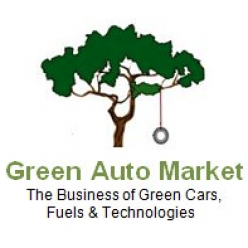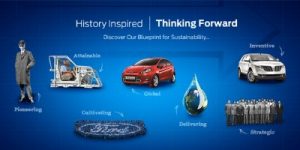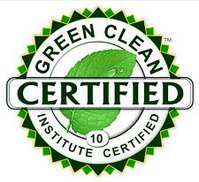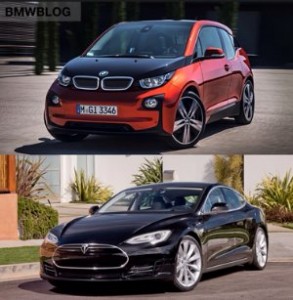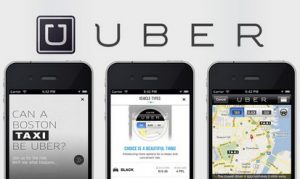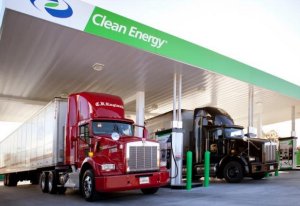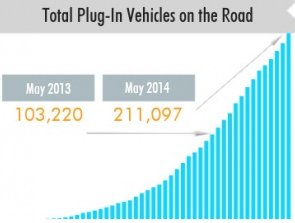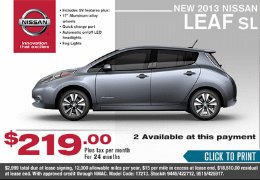Big Questions:
- Will regulatory emissions standards be enacted soon enough by OEMs to improve air quality and address health hazards?
- Will the sales volumes of plug-in electric vehicles, hybrids, and other alt-fuel vehicles make any real difference in a world heading for more than 100 million new vehicles sold per year?
- Is the California Air Resources Board continuing to be so unrealistic about enforcing zero emission targets that “compliance cars” will be as good as it gets?
- How can you get fleet managers, finance executives, and consumers to cross the bridge from short-term pocketbooks to long-term benefits and improvements?
 These questions weren’t necessarily solved last week at a symposium on clean transportation – but the issues were thoroughly addressed within one afternoon. Clean Transportation: Stepping on the “Gas” was presented last Thursday by CleanTech OC at Brandman University in Irvine, Calif. The comprehensive speaker panels point to the opportunity that sustainability organizations like CleanTech OC can play in bringing stakeholders together – and in addressing the challenges faced by all cleantech sectors attempting to breakthrough barriers.
These questions weren’t necessarily solved last week at a symposium on clean transportation – but the issues were thoroughly addressed within one afternoon. Clean Transportation: Stepping on the “Gas” was presented last Thursday by CleanTech OC at Brandman University in Irvine, Calif. The comprehensive speaker panels point to the opportunity that sustainability organizations like CleanTech OC can play in bringing stakeholders together – and in addressing the challenges faced by all cleantech sectors attempting to breakthrough barriers.
Patrick Thompson, CEO of EmiSense (a company that produces sensors for emissions monitoring) led a panel on “Drivers” in clean transportation. Dr. Wallace Walrod, chief economic advisor for Orange County Business Council, gave an update on corporate and government alliances. The hydrogen refueling infrastructure is getting a lot of focus in the county lately primarily through the FirstElement Fuel company, which is responsible for several of the refueling sites.
Dean Saito, manager on-road mobile source strategies at South Coast Air Quality Management District, discussed the challenges SCAQMD has been dealing with lately. Multiple pollutants are being analyzed now with greenhouse gas being central, but other toxic air contaminants are also being reported. Cancer risk in Southern California is a key factor for consideration, along with the US Clean Air Act and its emphasis on NOx. The inland empire and San Bernardino area continues to have the heaviest air pollution, with cargo transport contributing much of it, Saito said. Cherif Yousef, technology development manager for Southern California Gas Company, said that all of the Metro bus fleet in Los Angeles has converted over to compressed natural gas (CNG). Yousef also said that the US Department of Energy is looking at reducing its pressurized CNG tank requirement down from 3,600 pounds per square inch (psi). It could be moving toward 1,000 psi, which would be a big game changer, he said.
Khalid Simjee, site developer for NRG EV Services, moderated a panel on infrastructure. Simjee talked about the $100 million investment in the state that NRG is deploying now through its Freedom charging stations, with 200 of them becoming DC fast chargers. NRG is committed to renewables and is now the number one US utility using solar power and number three for wind power. Joe Gagliano, infrastructure business development specialist for California Fuel Cell Partnership, described the retail hydrogen stations being built in California. Hydrogen is being delivered through one of five technologies – gaseous compressed storage, liquid storage, electrolysis, steam methane reformer (SMR), and pipelines.
Harrison Clay, president of Clean Energy Renewable Fuels, talked about where the biomethane supply chain is going. Clean Energy is equipped to deliver its Redeem renewable natural gas through the US now; the challenge is that the cost is somewhere between gasoline/diesel and natural gas. Fleets are leaning toward traditional natural gas, but renewable natural gas is getting a lot of interest, Clay said. Three policies are guiding decision making – the US Renewable Fuel Standards and RIN fuel prices (which continue to be volatile); California’s Low Carbon Fuel Standard; and corporate sustainability.
Brandon O’Donnell of ChargePoint said that 80% of the charging network company’s revenue for this year is expected to come through private markets. That revenue had previously come through public funds, such as the US Department of Energy’s charging station project. ChargePoint, Blink (formerly run by ECOtality), General Electric, SemaConnect, OpConnect, and AeroVironment, have been deploying charging networks through the US and the numbers are increasing, he said. ChargePoint has installed 17,000 stations for 2,000 customers, he said.
Greg Alexander, senior project manager at E2 ManageTech (which provides environmental, health, and safety management information services), moderated a panel on fleet trends. Chuck White, director of regulatory affairs/west for Waste Management, talked about the 17 waste-to-energy plants that the company is now operating and which could power 650,000 homes. The company is striving to eventually reduce its fleet emissions 90% through renewable natural gas coming from its landfills.
Ashley White, manager of sustainability for supply chain at Kroger, said that the grocery store chain company is achieving three-year payback with liquefied natural gas (LNG) trucks. The company is getting four-year payback on hydrogen-powered fork lifts and pallet jacks; they’re being refueled within one-to-four minutes, she said. Aerodynamics also play a big part in Kroger’s sustainability campaign; testing is being done on potentially achieving 10% to 30% fuel economy improvements through aerodynamic design in its truck fleet. Bill Habibe, manager of transit technical services at Orange County Transit Authority (OCTA), said that the agency tends to be “technology neutral.” For several years, OCTA has been deploying CNG and LNG buses. Electric buses with 60 kilowatt batteries needing five hours per charge are being tried out, but cost and range are getting in the way, he said.
Marco Anderson, senior regional planner, sustainability, for Southern California Association of Government, served as moderator on a vehicles roundtable. Anderson and the panelists articulated the huge challenges automakers are going through now in California – and globally as rules of the game are shifting for OEMs. Eric Noble, founder and president of The Carlab, doesn’t think that OEMs will be able to comply with the California Air Resources Board’s zero emissions mandate. This is not new for the state, and there are always loophole credits that can be issued by CARB. Noble thinks that California does have one solution to this potential stalemate – CARB could issue OEM credits for their pilot programs that they typically run in the state through advanced technology, alternative fuel vehicles. Its allowing California to be a “petri dish” that moves the technology forward, he said.
David Peterson, regional manager at Nissan North America, said the value equation for the Nissan Leaf is making sense for consumers; sales are at 80% lease penetration, and the federal tax credit and HOV carpool lane stickers are helping. Atlanta has been the #1 sales market for the Leaf recently, which benefits from the $5,000 state tax credit in Georgia.
Toyota is testing out all the new technologies – hybrids, plug-ins, and fuel cell vehicles, giving customers options, said Logan Grizzel, who serves on Toyota’s advanced technology vehicles team. Providing all of these technologies is likely the best way to bring adoption, Grizzel said. Toyota is looking for commercialization at all levels, including the use of battery packs for energy storage in home power. “We’ll try everything out, and see what takes off,” he said.
Robert Langford, manager, plug in vehicle sales for Honda, was pleased to see the statement issued recently by the Alliance of Automobile Manufacturers on Tesla Motors’ battle with dealers in various states. Automakers and dealers need to look at selling EVs differently, and dealer staff need more training on it. Dealers are turning their sales staff over usually twice a year; training is needed to keep staff and to sell EVs as effectively as Tesla has been doing, he said.
Tedd Abramson, CEO of ZeroTruck, talked about what’s been happening in the medium-duty electric truck market. It’s helping to see New York offer its voucher program with 80% reduction on incremental costs as an incentive for fleets to convert over to EVs, he said. EV trucks are costing about 30% more than traditional trucks; fleet operators are becoming more in tune with it and see a three-and-a-half year return on investment. Municipalities are seeing the value of reducing maintenance costs when deploying EVs, and drivers are enjoying driving EV trucks, he said.
A vehicle expo was set up in the college’s parking lot. Hyundai, ZeroTruck, Nissan, Toyota, SunLine, Honda, Mercedes, and Kia displayed green vehicles – with several of them showing off HOV carpool lane stickers.
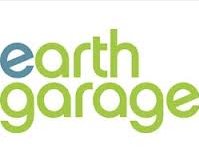 For those of you reaching out to consumers (and fleets) with interest in “green” issues like air quality, fuel efficiency, recycling, and protecting natural resources, you may want to consider the Earthgarage Certified Dealer program. The Shelton Group, a market research firm, has reported that the greenest consumers make up 24% of Americans. They make for a very desirable target audience – affluent, early adopters, and the most brand-loyal segment. They prefer to purchase greener products from greener companies.
For those of you reaching out to consumers (and fleets) with interest in “green” issues like air quality, fuel efficiency, recycling, and protecting natural resources, you may want to consider the Earthgarage Certified Dealer program. The Shelton Group, a market research firm, has reported that the greenest consumers make up 24% of Americans. They make for a very desirable target audience – affluent, early adopters, and the most brand-loyal segment. They prefer to purchase greener products from greener companies.